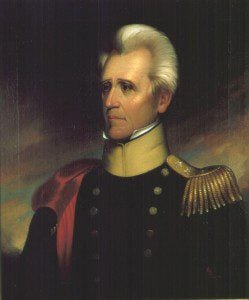For better or worse, Mormonism is committed to a theology that enshrines sexual difference. Through temple ceremonies, divine models of parentage, canonical creation accounts, and statements culminating in the virtually canonical “Proclamation on the Family,” sexual differentiation is part of mankind’s eternal identity, development, and exaltation.
While many statements by LDS leaders, past and present, point to a form of sex polarity, to borrow the model from scholar and nun Sister Prudence Allen, which renders men and women different and unequal (either privileging the male, or more commonly and recently, spiritually elevating the female) the model that seems to resonate with the moral sensibilities of most men and women today is what Allen calls “integral gender complementarity.” In this paradigm, men and women are whole persons who relate to each other in a unique and mutually flourishing pattern of differentiation and equality. But does Mormonism offer any coherent conceptual models that offer a doctrinally consistent, morally just paradigm of gender relationships and difference? Is such sexual complementarity possible without hierarchy, without fractionalization of personhood, without limiting the nature or potential of men and women, and other pitfalls that such dimorphism can create?
To be frank, I haven’t found many. Practical suggestions have blossomed in recent months in relation to changes the Church could make that would further the egalitarian trend in the Church. But so far, I have seen few theological paradigms that situate gender in compelling complementary and equal terms. So I will borrow with ahistorical and acontextual abandon a few examples inside and outside Mormon thought that present some possibilities worth exploring.
Let’s start with the one credited with formulating the first theory of sexual complementarity: Hildegard of Bingen (1098-1179). A highly talented and intelligent mystic and nun, Hildegard relied on certain Christian texts and ideas to support her theory that men and women are equal but different regarding their substance, generative roles, and capacities for wisdom and virtue. Foremost, she argued, God, in whose likeness male and female were created, possesses both masculine and feminine qualities. While each sex possessed natural starting point regarding certain capacities and virtues, both were to ultimately cultivate the masculine and feminine qualities within them. Men, naturally blessed with courage, strength, and fortitude, were to cultivate grace, mercy, and insight; women, naturally blessed with the latter, were to also cultivate the former. All of these virtues were equally valuable. Cultivating these virtues, however, also required practical knowledge gained through experience with the complementary sex. Therefore, men and women who form deep bonds with each other are the most likely to achieve a fullness of happiness and personal development.
What was also unique about Hildegard’s theory was the balanced integration of the material and the spiritual, or the soul and the body. Hildegard suggested men, created first from the dust of the earth, were like the highest element, fire, and the lowest, earth, while women were similar to the two middle elements, air (having been formed not from the earth, but from Adam’s bone) and water. The net result was equal and complementary; man consequently excelled in power and strength, while woman had more refinement and creativity. While her theory veers toward polarizing depictions at times, she was the first to make a sustained effort to maintain an equal and differentiated relationship between the material and spiritual aspects of man and woman.
A second example I draw from C.S. Lewis’s Perelandra novel–a spin off the Adam and Eve narrative. In the last chapter, the narrator witnesses two “eldil,” or angelic beings. “Malacandra” “shone with cold and morning colours, a little metallic–pure, hard, and bracing.” “Perelandra,” on the other hand, “glowed with a warm splendour, full of the suggestion of teeming vegetable life.” Though “both were free from any sexual characteristics, either primary or secondary,” they exhibited a “curious difference” that was difficult to pinpoint, yet “impossible to ignore.” The narrator must rely on inferior metaphors– “Malacandra was like rhythm and Perelandra like melody.” All the analogies exhibit a clearly differentiated but equal relationship to each other.
The narrator concludes he has witnessed the “real meaning of gender”: not an “imaginative extension of sex,” but “a reality, and a more fundamental reality than sex.” Masculine and Feminine, as a kind of platonic archetype, is the “fundamental polarity which divides all created beings”, while sex is “merely the adaptation to organic life of a fundamental polarity which divides all created beings” and a rather blurred reflection of masculine and feminine” at that. In a suggestion that diminishes but does not eliminate the material, the narrator explains that “[men and women’s] reproductive functions, their differences in strength and size, partly exhibit, but partly also confuse and misrepresent, the real polarity.”
Like the LDS Proclamation, CS Lewis recognizes Masculine and Feminine as an eternal polarity that predates [fully] physical manifestations of sex. Physical characteristics may simply be a somewhat Fall-distorted type of a more profound differentiation and complementarity that existed before this life and will be perfected after this life. Unlike Hildegard, Lewis doesn’t seem to imply that either sex is to develop the distinctive qualities of the other; this depiction tends towards a sort of “fractional complementarity,” to use another of Allen’s models.
Let’s end with a Mormon: In the essay “Two Trees,” Valerie Hudson argues that men and women have distinct but equally vital roles in the broad scope of the “Plan of Salvation,” the journey all humans make from pre-existence through mortality to postmortal life. Women, championed by a heroic Eve, are responsible for ushering mankind through the veil of birth through female ordinances of pregnancy, childbirth, and lactation. Men fulfill their role by ushering mankind back through the veil to the presence of God (a term that refers to Heavenly Mother and Heavenly Father together) through male ordinances of baptism, sealing, and so on. Any supposed inequality is a result of faulty perspective of one who is past birth or giving birth, and therefore is oriented towards men’s ordinances. It is “a plan of equal partnership between men and women; a plan of joyous cooperation.”
In a later essay, “Plato’s Son,” Hudson sacralize the material even further. Not only are maternity and its related physical processes rights that were eagerly sought by and graciously bestowed on women before this earth life; they are the source of women’s indispensability to the Plan of Salvation and their priesthood power. Menstruation, pregnancy, etc., are “spiritual ordinances of the highest order and the greatest power, presided over by women apprenticed to their Heavenly Mother… [Childbearing] is no simple physical activity, but the representation and incarnation of the most exquisite understanding of divine love. And that love bears a distinctly female cast as a result ” Men’s priesthood ordinances, on the other hand, are a replacement for creating the type of divine love they lack the capacity to form in the absence of childbearing. Sex, a sacrament, “of peace,” joins men and women in the interdependence that procreation requires– a symbolic gesture, furthermore, of the limitations of the One, and the limitless potential of the Two. This complementary generativity is at the heart of godhood.
While Hudson boldly reappropriates women’s physicality in highly sacred terms (refreshing, to say the least), her model is not without problems. The assumption that all women view menstruation and childbirth as sacred rights and supremely fulfilling experiences (to be continued throughout eternity) may not find universal support. Hudson implies that to think otherwise is to miss the entire beauty and wonder of womanhood–yet personal experience to the contrary may overwhelm the benefits of the concept. Furthermore, it seems to perpetuate asymmetries it was designed to fix; if the sacred ordinances of childbirth replicate divine love so uniquely, do priesthood ordinances equally fulfill this expectation? The symmetry is further disturbed by the fact that these priesthood ordinances do not pertain to one’s own children (and that women exercise priesthood in the temple); if priesthood were circumscribed by fatherhood, the parallel might be sounder. In addition, there is a meritorious element to priesthood that does not seem apparent in motherhood (unless, as one might infer, women “merited” motherhood in the pre-existence); barring this situation, should women’s indispensability be so automatic? A very fruitful possibility, nonetheless.
Hopefully, as another post recently suggested, more attempts are to come.











